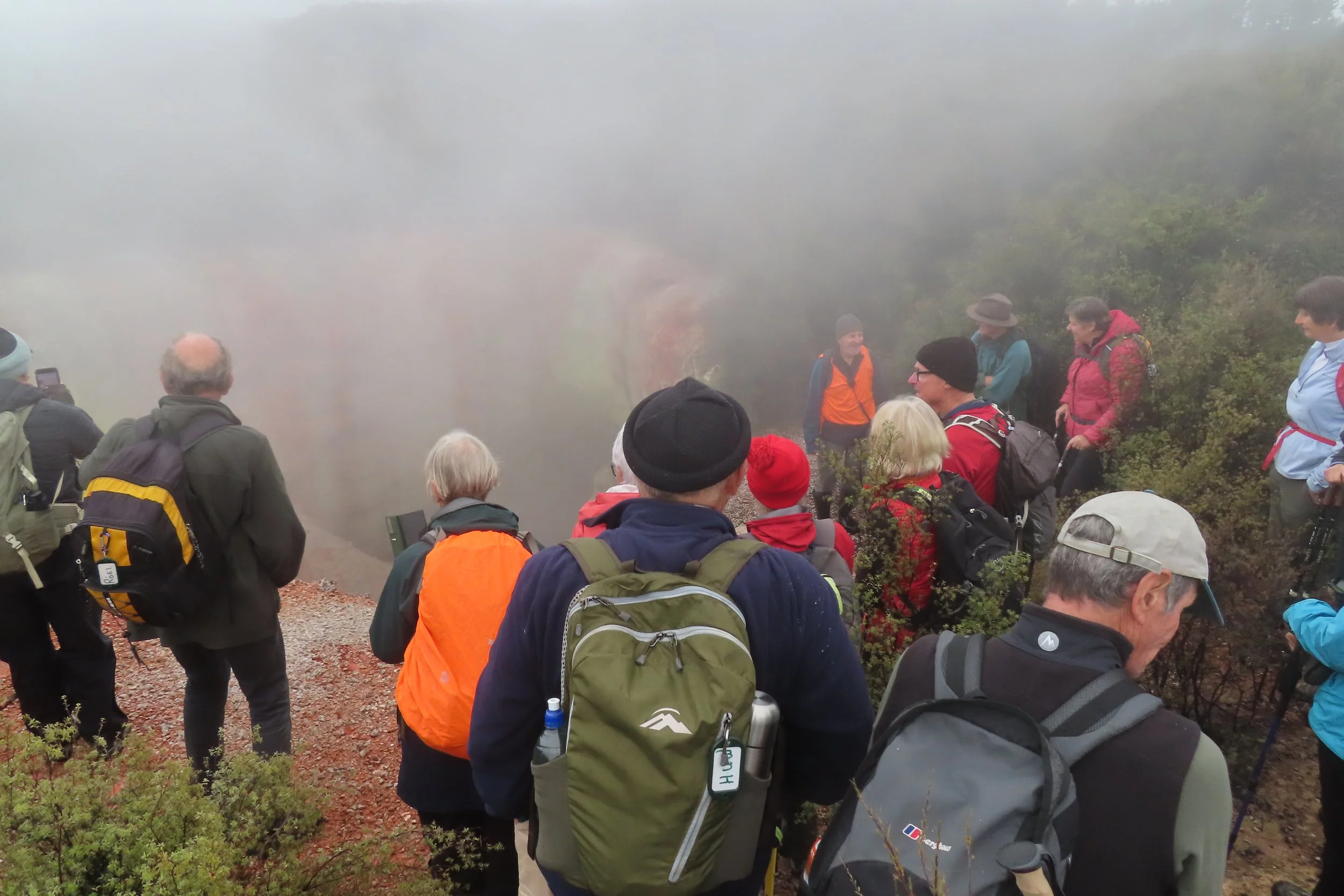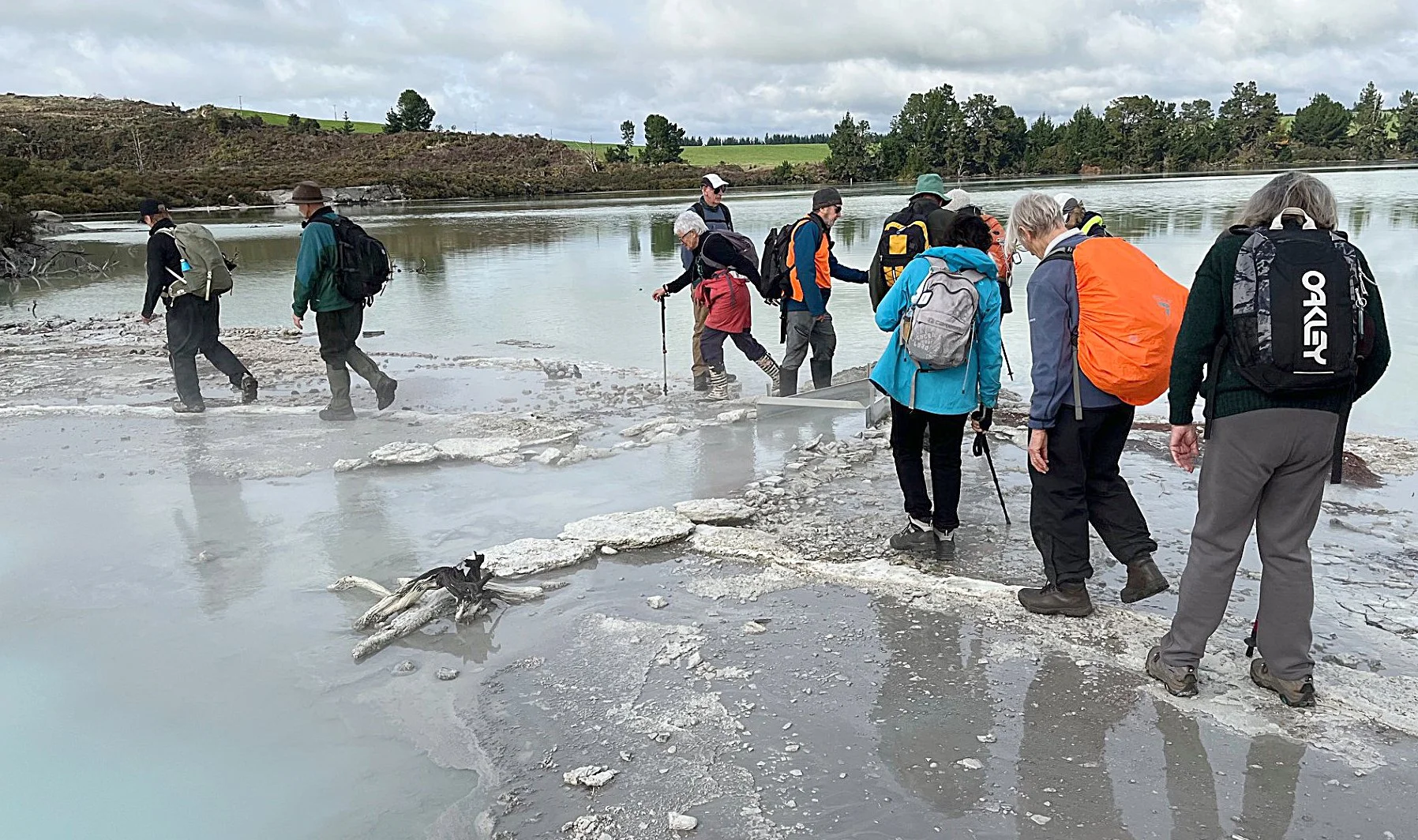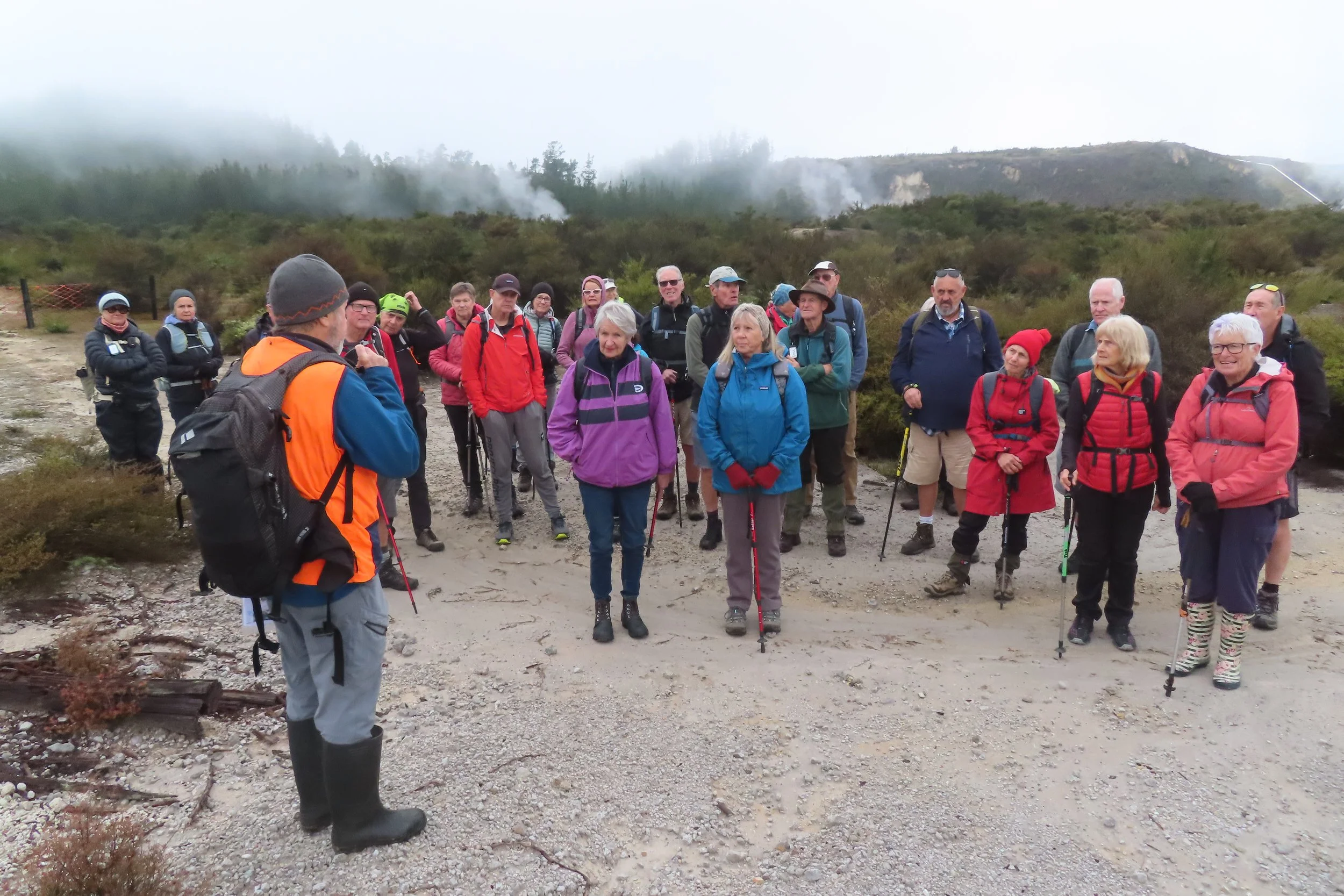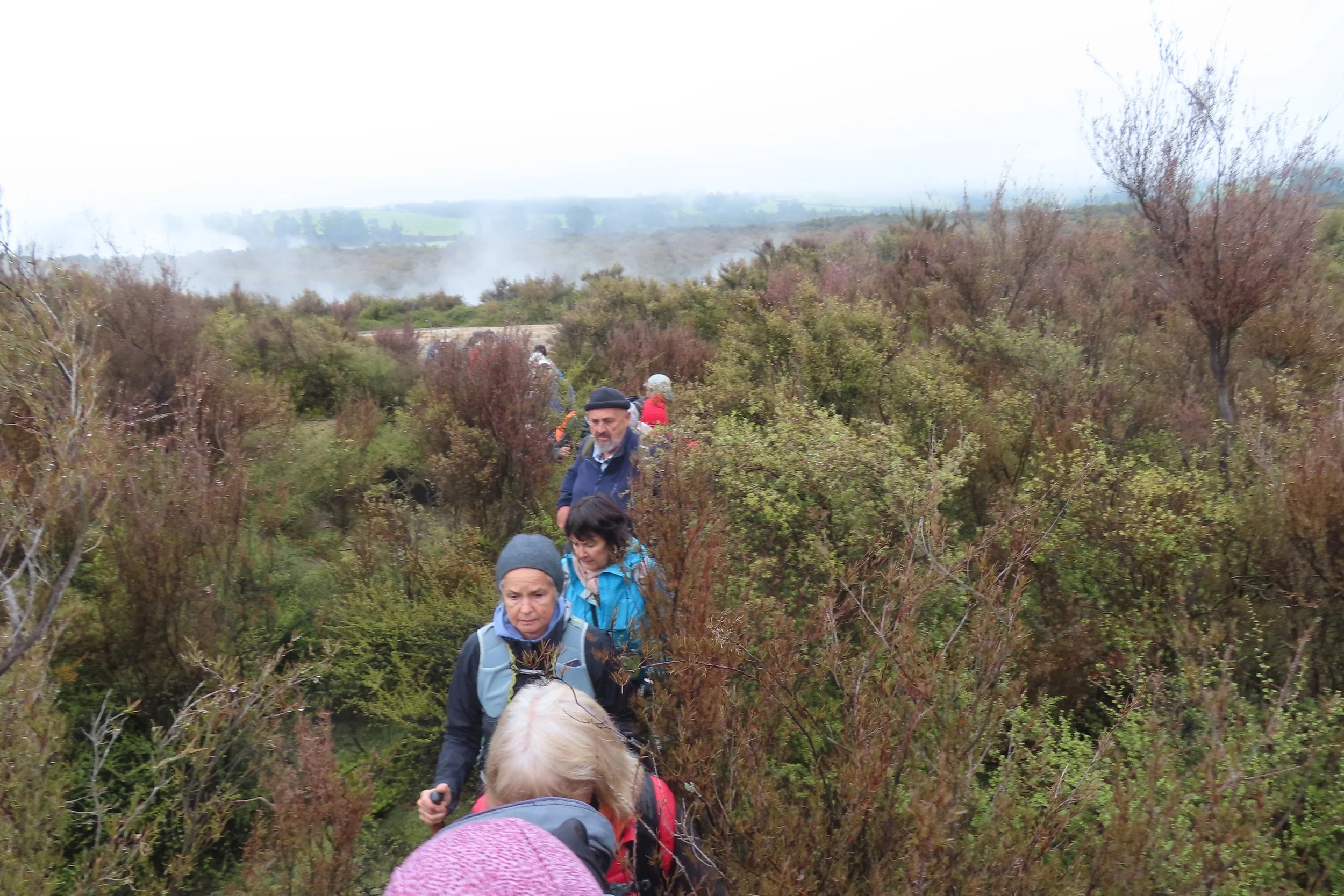Walking into an otherworldly scene
Rainbow Crater, Sulphur Crystal Cliffs, the Lagoon, Sauron’s Eye, Miner’s Lament all names oozing drama and colour.
With two wise earth scientists, well versed in the geology and history of the Rotokawa geothermal field as our guides we knew were in for an interesting and exciting Rāhina.
The unmistakable, pungent smell of sulphur and swirling fog greeted us, so reminiscent of fire and brimstone.
The track we followed was well formed and bordered by low growing geothermal kānuka and spiky dracophyllum interspersed with odd large areas of silvery coloured bare soil.
The Rotokawa area has long been treasured and exploited for its deposits of sulphur.
Local iwi valued it for skin treatments and treating asthma while early tourists admired and souvenired pieces.
European miners first surface mined, collecting sulphur in wheelbarrows and using it to meet the burgeoning demand for agricultural fertiliser.
The collapse of White Island supplies after its 1914 eruption and the demand for sulphur to use in WW1 for explosives meant more machinery was used.
International and national companies became involved especially after the discovery of large deposits some 130- 200 feet beneath Lake Rotokawa.
When these efforts failed and proved uneconomical the land became DOC’s responsibility.
Rehabilitation of these now bare areas, defoliated by the mining equipment, the siting of building and commercial debris was, and still is, slowly occurring.
Soon we were pushing our way, single file, through thick bushes with a very careful eye on the many holes in the ground towards the edge of Rainbow Crater.
Behind the steam the streaks of red and yellow colours draped the walls of this deep collapsed crater.
A beautiful site and experience, but a place where caution was needed.
We made our way back to the looping track we were following, admiring the different soil colours.
Not only the yellow of sulphur but a mauve manganese and red ochre or korowai used by Māori for paint, dye, ceremonial gifts and trading.
It was a surprise to spot the unkindly named dog turd fungi. Yes, there is such a thing, and it does look like its nickname.
Its scientific name is pisolithus tinctorious and is known to accumulate elemental sulphur in its fruiting body.
After another brief scramble through bush, we were on top of an astonishingly high concrete wall looking down at an odd array of concrete structures below.
Apparent relics of Fletcher’s attempts to mine sulphur economically. One other method, the Frasch method, also failed because pumice soil fractured under the pressure needed to keep sulphur in a molten state.
A side track and clamber down a short bank had us in middle earth.
The Middle Earth Crater was a weird collection of murky steam heated pools, little lily pads of bubbling sulphur and the Sauron’s Eye pool.
Here we were asked to follow in the leader’s footsteps and not stray. Needless to say, no-one disobeyed!
Next, we came to the Lagoon and Lake Rotokawa. The water was a milky green, blue and steaming.
Silica around the edge cracked like giant jigsaw piece and formed a hard rim around some vents.
In one small area traces of gold were discovered.
Rotokawa means bitter and indeed it is very acidic with a Ph of 2.2.
Dotterels have been seen here and parera or grey ducks provided food for Ngati Tahu.
A little exploring was called for so it was back amongst the scratchy bushes, this time with a much taller canopy.
We edged our way along the Parariki Stream eventually coming out above it before dropping down to Mars Flat.
The high temperature combined with the acidity and silica mean that strange-shaped sinter deposits are found here. Some were green, others looked like tiny shells, and some have formed around dying microbes.
Research teams have visited and filmed this area hoping it might shed light on life in extreme conditions in other planets.
To finish our day, we walked up the road to the Sulphur Crystal Cliffs.
Hot hydrogen sulphite cools as it comes out of fumaroles and deposits sparkling yellow crystals, some drooping down like stalactites and others in tight little beads.
A perfect ending to a colourful and interesting day.
Our thanks to our guiding scientists for sharing so much knowledge and making the day fun.
Next week the trees will be taller and the river fast flowing.
If you would like more information about our group, please email walkersmondaytaupo@gmail.com or follow us on Facebook at ‘Taupo Monday Walkers’.
Written by Sandra – Monday Walkers




